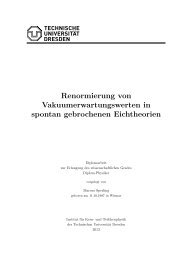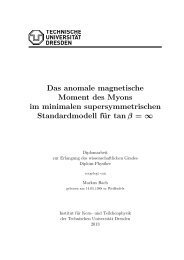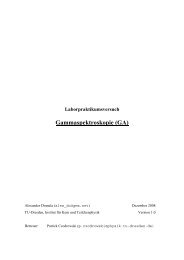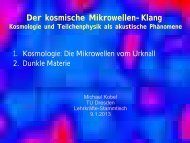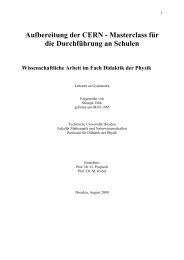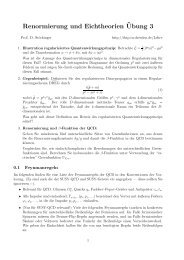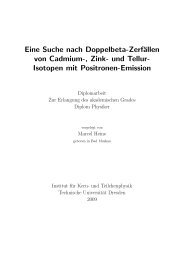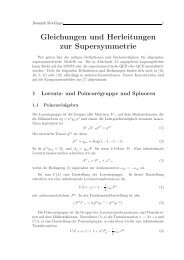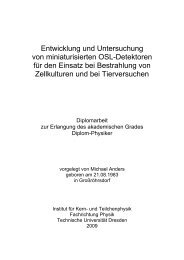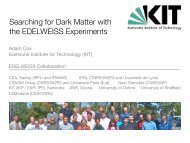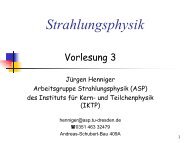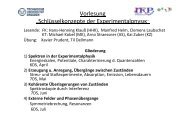a design study for a cobra upgrade to - Institut für Kern- und ...
a design study for a cobra upgrade to - Institut für Kern- und ...
a design study for a cobra upgrade to - Institut für Kern- und ...
Create successful ePaper yourself
Turn your PDF publications into a flip-book with our unique Google optimized e-Paper software.
5.3 Monte Carlo studies of the <strong>design</strong>ed <strong>upgrade</strong> 71<br />
Figure 5.8: Distribution of the number of involved CZT and CsI crystals<br />
<strong>for</strong> 116 Cd decays in<strong>to</strong> the first excited state of 116 Sn.<br />
One million decays were simulated in the CZT crystals. The spectrum<br />
of deposited energy in all CZT crystals (left side of figure 5.7) shows<br />
the energy deposition of both electrons in the source CZT crystal up <strong>to</strong><br />
1511 keV, with the maximum aro<strong>und</strong> the expected 0.32 × Q. The full<br />
energy peak of the 1294 keV gamma ray, absorbed in a second CZT,<br />
and the deposition of the electron and a part of the gamma energy in<br />
the source crystal is visible. The CsI sum spectrum (right side of figure<br />
5.7) shows the 1294 keV full energy peak and a Comp<strong>to</strong>n spectrum up<br />
<strong>to</strong> 1080.7 keV, overlaid with the backscatter peak at 213.3 keV. It can be<br />
assumed, that hardly any electrons leave the CZT crystal.<br />
The distribution of events, depositing energy in the CZT and CsI crystals<br />
is plotted in figure 5.8. 23.2 % of all events are not detected in the<br />
CsI crystals. This correspond with the from section 5.1.1—“Scintilla<strong>to</strong>r<br />
size” determined ≈70 % <strong>to</strong>tal efficiency, which was determined only <strong>for</strong><br />
pho<strong>to</strong>ns, hitting a flat scintilla<strong>to</strong>r perpendicular <strong>to</strong> the input face and is<br />
there<strong>for</strong>e expected <strong>to</strong> be higher <strong>for</strong> this geometry.<br />
A simulation of 1294 keV pho<strong>to</strong>ns, being initialised in the CZT detec<strong>to</strong>rs,<br />
showed that 17.7 % of these pho<strong>to</strong>ns are interacting neither with<br />
the CZT, nor with the CsI detec<strong>to</strong>rs.



